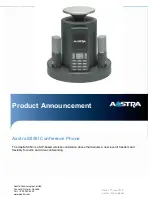
Table 19: QoS Profile and Interface Settings
Port range
WMM UP
802.1p
DSCP
Traffic type
UDP 16384
–
32677
6
5
EF (46)
Voice
UDP 16384
–
32677
5
4
AF41 (34)
Interactive Video
TCP/UDP 5060
–
5061
4
3
CS3 (24)
Call Control
To improve reliability of voice transmissions in a nondeterministic environment, the Cisco Desktop
Collaboration Experience supports the IEEE 802.11e industry standard and is Wi-Fi Multimedia (WMM)
capable. WMM enables differentiated services for voice, video, best effort data and other traffic. However,
in order for these differentiated services to provide sufficient QoS for voice packets, only a certain amount
of voice bandwidth can be serviced or admitted on a channel at one time. If the network can handle
“
N
”
voice
calls with reserved bandwidth, when the amount of voice traffic is increased beyond this limit (to N+1 calls),
the quality of all calls suffers.
To help address issues with VoIP call quality, an initial Call Admission Control (CAC) scheme is required.
With SIP CAC enabled on the WLAN, QoS is maintained in a network overload scenario by ensuring that
the number of active voice calls does not exceed the configured limits on the AP. During times of network
congestion, the system maintains a small bandwidth reserve so wireless phone clients can roam into a
neighboring AP, even when the AP is at
“
full capacity.
”
After reaching the voice bandwidth limit, the next
call is load-balanced to a neighboring AP without affecting the quality of the existing calls on the channel.
Cisco Desktop Collaboration Experience utilizes TCP for SIP communications, and Cisco Unified
Communications Manager registrations can potentially be lost if an AP is at full capacity. Frames to or
from a client that has not been "authorized" through the CAC can be dropped, leading to Cisco Unified
Communications Manager de-registration. Therefore, Cisco recommends that you disable SIP CAC.
Note
The DSCP, COS and WMM UP markings correctly display for the optimum transmission of video frames.
Cisco Desktop Collaboration Experience does not support Voice and Video CAC; Cisco recommends that
you implement SOP CAC.
Note
Cisco Desktop Collaboration Experience DX600 Series phones use the Flexible DSCP and Video Promotion
feature to resolve inconsistent QoS and inconsistent bandwidth accounting when a video occurs with a different
type of device.
Related Topics
Authentication Methods, on page 86
Cisco Unified Communications Manager Interaction, on page 86
VoIP WLAN Deployment, on page 93
Cisco Desktop Collaboration Experience DX650 Administration Guide, Release 10.1(1)
85
VoIP Wireless Network Components
Содержание DX650
Страница 12: ...Cisco Desktop Collaboration Experience DX650 Administration Guide Release 10 1 1 xii Contents ...
Страница 20: ......
Страница 64: ......
Страница 116: ...Cisco Desktop Collaboration Experience DX650 Administration Guide Release 10 1 1 98 Wireless LAN Setup ...
Страница 172: ......
Страница 182: ...Cisco Desktop Collaboration Experience DX650 Administration Guide Release 10 1 1 164 Application Dial Rules ...
Страница 184: ......
Страница 196: ...Cisco Desktop Collaboration Experience DX650 Administration Guide Release 10 1 1 178 Status Menu ...
Страница 212: ...Cisco Desktop Collaboration Experience DX650 Administration Guide Release 10 1 1 194 Streaming Statistics ...
Страница 220: ......
Страница 228: ...Cisco Desktop Collaboration Experience DX650 Administration Guide Release 10 1 1 210 User Voice Messaging System Access ...
Страница 230: ...Cisco Desktop Collaboration Experience DX650 Administration Guide Release 10 1 1 212 International Call Logging Support ...
















































